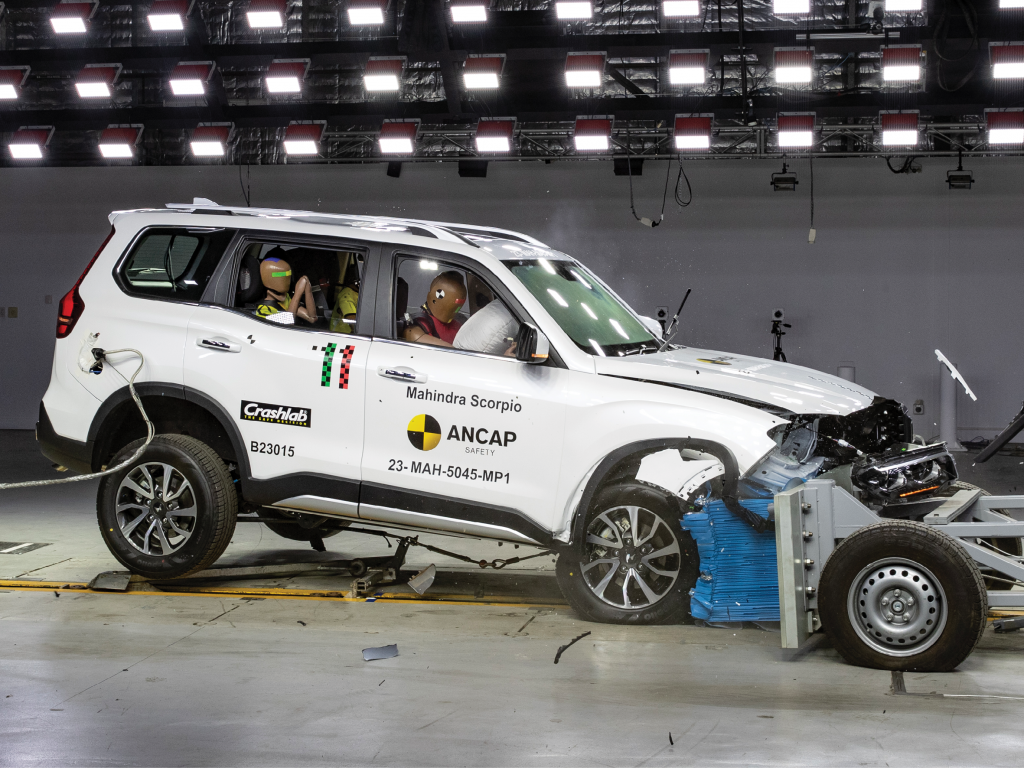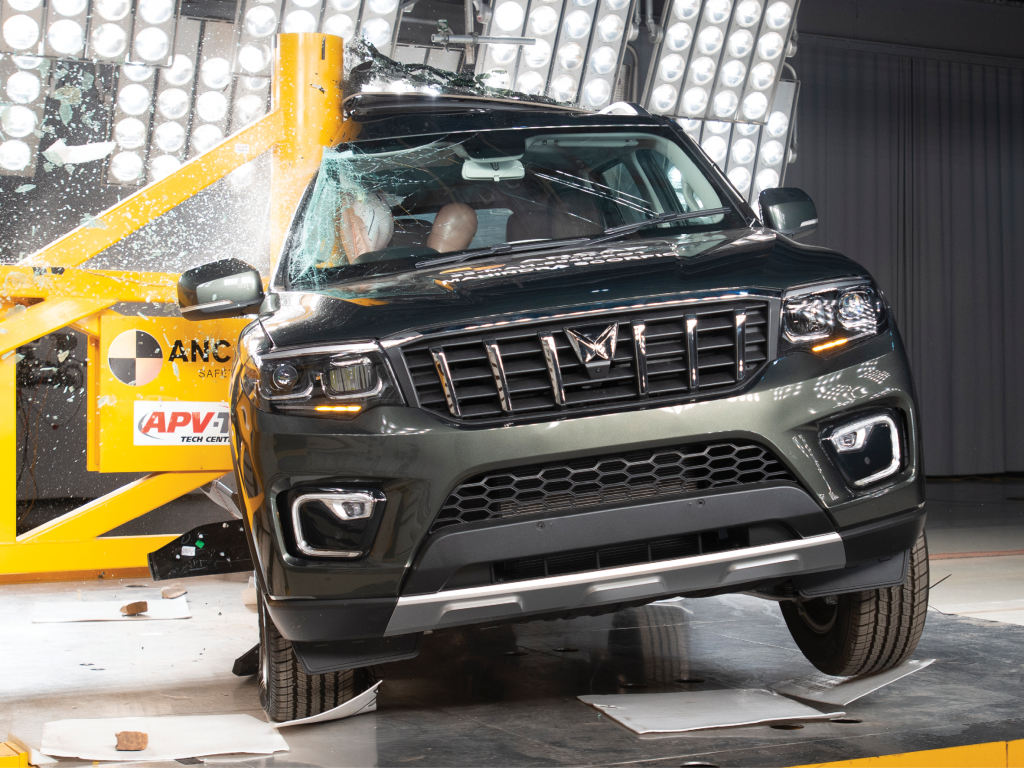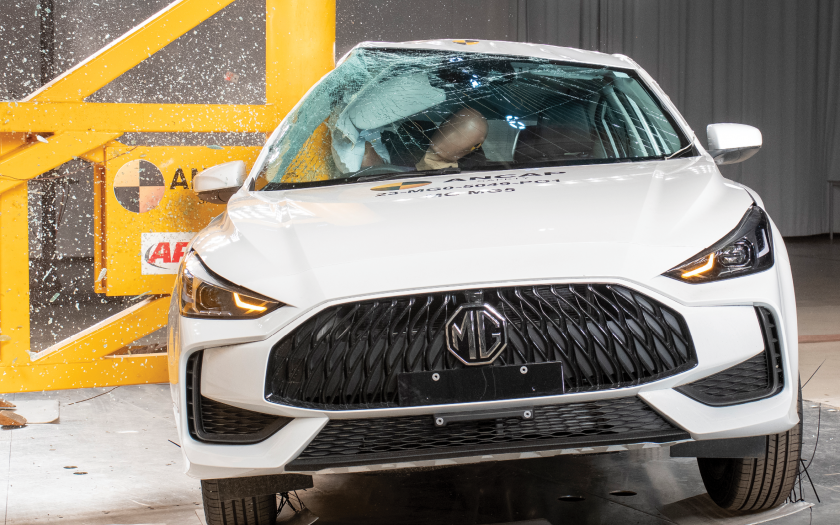AUSTRALIA AND NEW ZEALAND’S INDEPENDENT consumer voice on vehicle safety is strongly reminding new car buyers and fleet purchasers to check the ANCAP safety rating before purchase, with two zero-star ratings published today.
Local testing of the MG 5 sedan and Mahindra Scorpio SUV has shown both models unable to achieve a safety rating any higher than zero stars due to a range of limitations – in both physical crash protection and active collision avoidance performance. In many areas, this was due to the fundamental omission of safety features that have been commonplace in new cars for many years.
“Both brands have misjudged the safety expectations of today’s consumers,” said ANCAP Chief Executive Officer, Carla Hoorweg.

The MG 5 recorded significant injury risk measurements for the chest (Poor) and legs (Poor) of the driver in the frontal offset test, and the chest (Poor) and legs (Poor) of the rear passenger in the full width frontal test. Penalties were applied for chest deflection and seatbelt loading exceeding injury limits, and hazards behind the dashboard structure.
Loading on the head and neck of the child dummies in the MG 5 was significantly higher than seen in most current generation vehicles, with Weak results seen for three of the four dummies across both the frontal and side impact tests – indicating a lack of design effort to prevent rear-seat occupant injury in frontal impact and side impact scenarios.
Seatbelt pre-tensioners and load limiters are not fitted to front or rear seating positions on the base Vibe variant of the MG 5 nor the rear seating positions on the Essence variant; a centre airbag to prevent injury in side impact crashes is not offered; lane support or blind spot monitoring functionality is not offered in any form; autonomous emergency braking performance was limited or not available; and contemporary aids to monitor driver alertness and the presence of children inadvertently left in the vehicle are not offered.

The Mahindra Scorpio was shown to provide a mix of Good, Acceptable, Marginal, Weak and Poor protection for adult occupants in the frontal offset, full width frontal, side impact and oblique pole crash tests. A high risk of serious injury was recorded for the head, neck and chest of the rear female passenger in the full width frontal test with a penalty applied for high seatbelt loading.
In the side impact test, the driver’s seatbelt was observed to unlatch (tongue detached from buckle) during deployment of the seatbelt pre-tensioner immediately prior to impact. Whilst having no impact on the test score, ANCAP has reported this to the manufacturer for further examination.

The Mahindra Scorpio is a three-row vehicle with side curtain airbags fitted for first and second rows only. Top tether child restraint anchorages are not fitted in the third row, and this vehicle is therefore not suitable for transporting young children in these seating positions. A centre airbag between the two front seat occupants is not available.
The Scorpio is offered as a six-seat vehicle in Australia. In New Zealand, a seven-seat variant is also sold. The seven-seat NZ variant provides a lap-only seatbelt in the centre seating position of the second row. Lap-only belts have not been commonplace in new vehicles for more than a decade.
The Mahindra Scorpio is not equipped with any form of active collision avoidance features, and scored 0% for the Safety Assist area of assessment.
| The MG 5 scored: 37% Adult Occupant Protection 58% Child Occupant Protection 42% Vulnerable Road User Protection 13% Safety Assist |
The Mahindra Scorpio scored: 44% Adult Occupant Protection 80% Child Occupant Protection 23% Vulnerable Road User Protection 0% Safety Assist |
“The MG 5 and Mahindra Scorpio were both released into the Australian and New Zealand new car markets for the first time this year, yet it’s clear that their safety offerings are some generations behind what we see with almost every new car on sale today.”
“This is a stark reminder that not all cars offer the same level of safety – even when they’re brand new models.”
“Market competition is healthy and encouraged, however there is also a well-established expectation from Australian and New Zealand private consumers and fleet buyers that new cars entering our market offer the best levels of safety.”
“With our independent test results now to hand, we hope to see significant improvements made to these models to have them more closely align with the safety credentials offered by their competitors,” said Ms Hoorweg.
